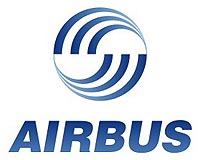 |
Irvine CA (SPX) Nov 18, 2009 It's the year 2060, and 75 percent of drivers in the Greater Los Angeles area have hydrogen fuel cell vehicles that emit only water vapor. Look into Shane Stephens-Romero's crystal ball - a computer model called STREET - and find that air quality has significantly improved. Greenhouse gas emissions are more than 60 percent lower than in 2009, and levels of microscopic soot and ozone are about 15 percent and 10 percent lower, respectively. "For the first time, we can look at these future fuel scenarios and say how they're going to impact things like ozone and particulate matter, which have severe effects on people's lungs and quality of life," said Stephens-Romero, a UC Irvine doctoral candidate in the Advanced Power and Energy Program. His 2060 analysis appeared online recently in Environmental Science and Technology. It's the first peer-reviewed test of the computer model, which has caught the attention of California policymakers and auto industry leaders trying to integrate alternative fuels into the transportation system. "We're transitioning to new technologies. How do we do this while maintaining our lifestyle and keeping our economy robust?" Stephens-Romero said. "We don't know how these changes could affect the future." The Spatially and Temporally Resolved Energy and Environment Tool, he says, can help. STREET considers variables in extreme detail - not just which fuel vehicles will use but how the fuel is made, where it comes from, how it's transported and along which routes, and where fueling stations might be located. The computer model also can determine what changes must occur to achieve a desired result. For example, to bring pollution below federal limits, what percentage of the vehicle fleet would need to run on alternative fuel? "California policymakers could use the tool in this way to improve air quality in the region," Stephens-Romero said. Scott Samuelsen, director of the Advanced Power and Energy Program, says Stephens-Romero's work is getting high praise from leaders at Toyota, Honda, General Motors, Shell, Air Products, the California Air Resources Board and the California Energy Commission. "The research is well positioned," Samuelsen said, "considering the development of a hydrogen infrastructure is at the crossroads of global climate change, the future of the automobile, the state economy, and California's leadership in addressing the conflict between energy and the environment." Samuelsen led the development of UCI's hydrogen fueling station, the most technologically advanced, publicly accessible station in the world. It was the first of its kind in Orange County and is a key component of the California Hydrogen Highway Network. In addition to Stephens-Romero and Samuelsen, UCI scientists Marc Carreras-Sospedra, Jack Brouwer and Donald Dabdub worked on the 2060 study, which was funded in part by the U.S. Department of Energy. Share This Article With Planet Earth
Related Links University of California, Irvine Bio Fuel Technology and Application News
 Alternative fuel can power 15 pct of flights by 2020: Airbus
Alternative fuel can power 15 pct of flights by 2020: AirbusDubai (AFP) Nov 17, 2009 Alternative fuels could power 15 percent of global air traffic by 2020 and 30 percent by 2030, European aircraft-maker Airbus said at the Dubai Airshow on Tuesday. "If we get the right sources, it is possible that 15 percent of the world's jet fuel will come from sustainable sources by 2020, and 30 percent will come from sustainable sources by 2030," said Ross Walker, engineering programme ... read more |
|
| The content herein, unless otherwise known to be public domain, are Copyright 1995-2009 - SpaceDaily. AFP and UPI Wire Stories are copyright Agence France-Presse and United Press International. ESA Portal Reports are copyright European Space Agency. All NASA sourced material is public domain. Additional copyrights may apply in whole or part to other bona fide parties. Advertising does not imply endorsement,agreement or approval of any opinions, statements or information provided by SpaceDaily on any Web page published or hosted by SpaceDaily. Privacy Statement |